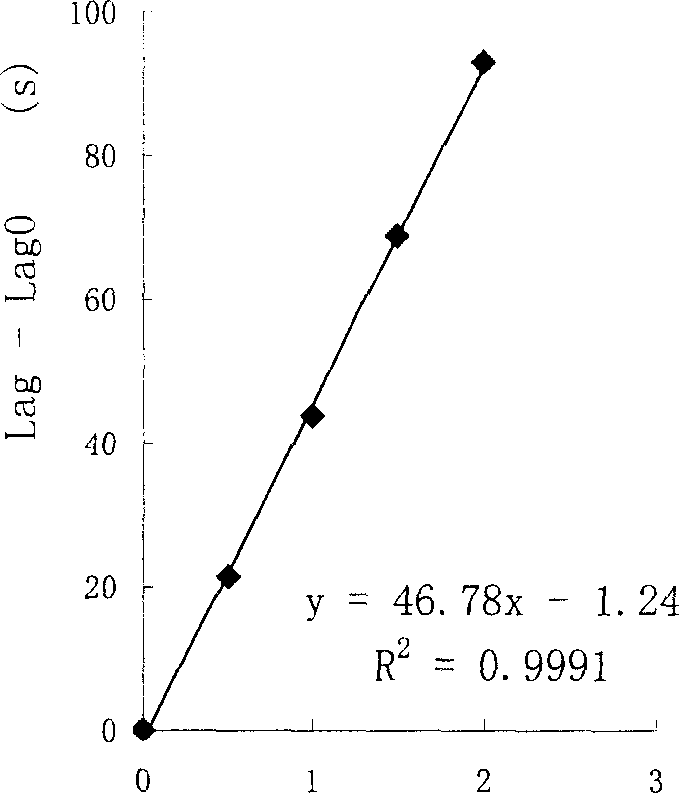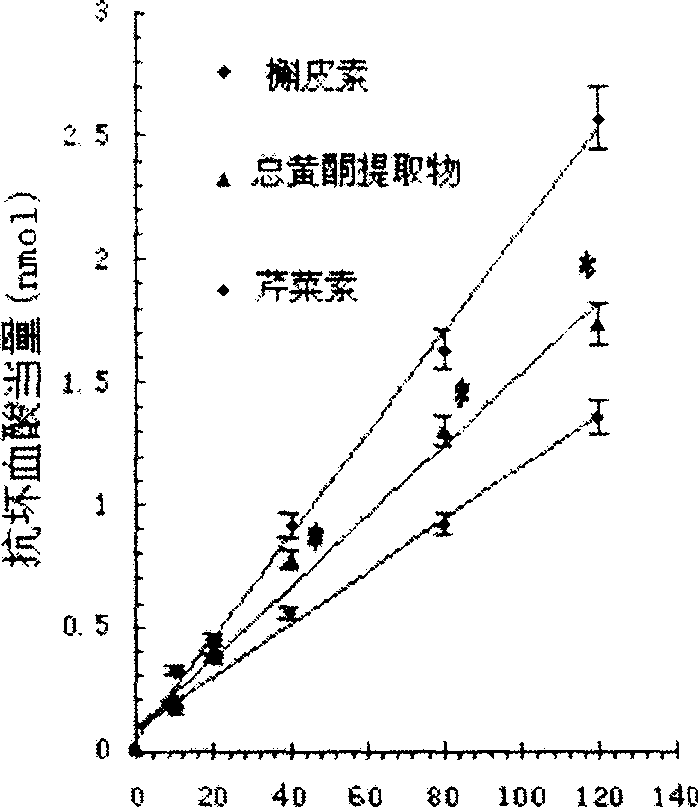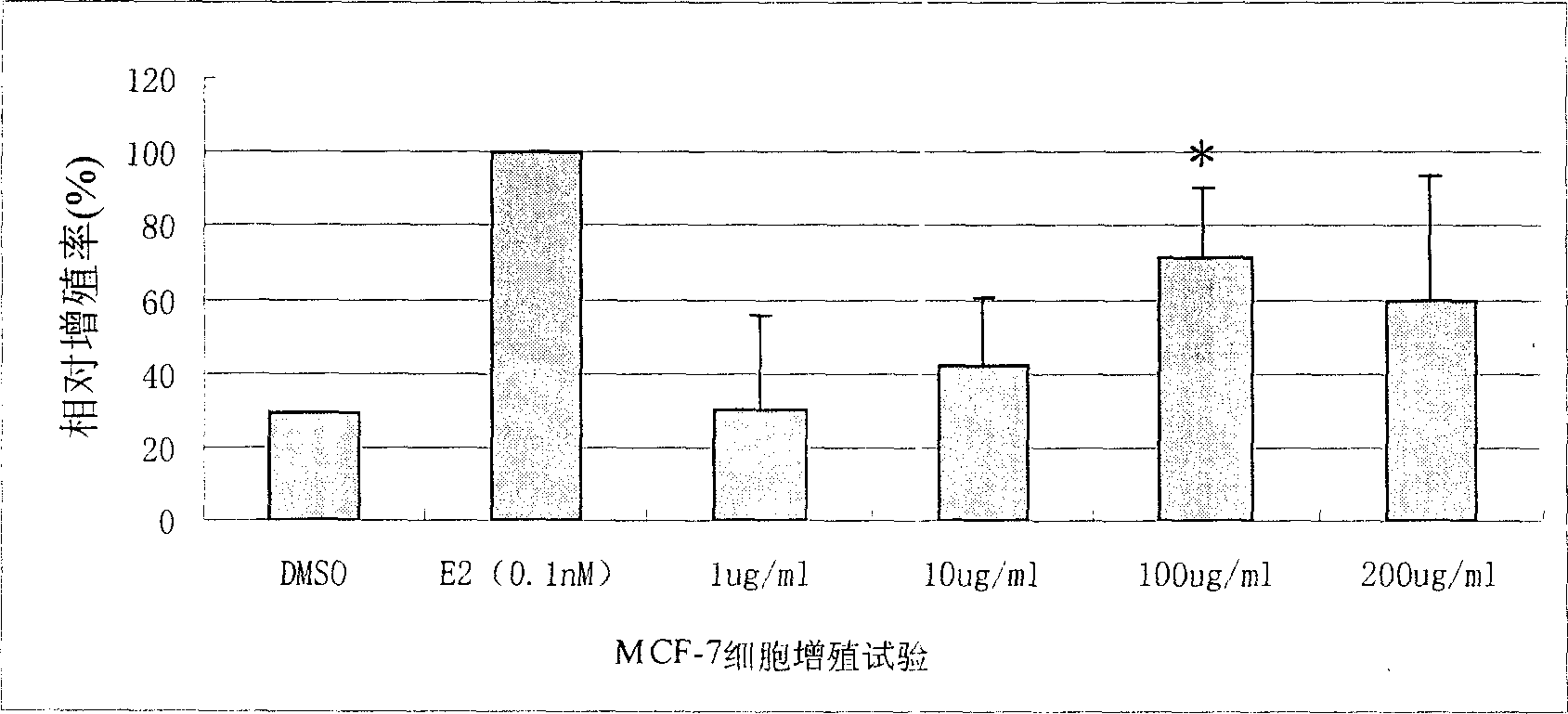Rice bean flavone extracts and their use
A technology for extracts and total flavonoids is applied in the field of natural medicine extracts to achieve the effects of high safety, affirmation of medicinal and nutritional value, and affirmation of curative effect.
- Summary
- Abstract
- Description
- Claims
- Application Information
AI Technical Summary
Problems solved by technology
Method used
Image
Examples
Embodiment 1
[0027] Example 1 Preparation method of adzuki bean total flavonoids of the present invention
[0028] Weigh 3.0 kg of commercially available adzuki bean seed dry raw materials, 8 times the amount of 70% ethanol, and extract twice at 75°C for 1.5 hours each time; concentrate under reduced pressure to evaporate the ethanol, and filter paper to remove insoluble matter after cooling. The filtrate was extracted three times with petroleum ether to remove impurities, and the aqueous phase was evaporated to remove the remaining petroleum ether and then passed through a polyamide column (5cm×80cm). Wash with water first, then eluted with 70% ethanol. Collect the ethanol eluate, concentrate under reduced pressure to evaporate the ethanol. The concentrated liquid is freeze-dried to obtain the adzuki bean total flavonoids extract. The total flavonoids content is determined to reach more than 50%, which is composed of catechin, rutin, myricetin, rutin, and quercetin.
[0029] The total flavono...
Embodiment 2
[0030] Example 2 Maximum tolerance experiment of the extract of the present invention
[0031] (1) Materials and methods:
[0032] The total flavonoids extract of adzuki bean was obtained with reference to the method in Example 1, and was formulated into a suspension with 0.5% sodium carboxymethyl cellulose. The concentration of the extract is equivalent to the extract containing 10g of raw material per milliliter.
[0033] Use the maximum concentration (equivalent to the content of 10g raw material / ml) and the maximum administration volume of 0.4ml / 10g / time to give the mice by gavage. The mice are gavage with the above suspension twice within a day, with an interval of 5-6 hours. The body weight and various symptoms of mice changed on the day of drug administration and in the following two weeks.
[0034] (2) Results:
[0035] The mice had loose stools on the day of intragastric administration, but there was no death, and no apparent adverse symptoms were seen in the following tw...
Embodiment 3
[0038] Example 3 Antioxidant effect in vitro
[0039] (1) Materials and methods:
[0040] The total flavonoids extract of adzuki bean was obtained by referring to the method in Example 1, and the in vitro antioxidant experiment was performed as follows:
[0041] Antioxidant activity in vitro by Photochem (Analytik Jena AG) antioxidant tester. This experiment uses the ACW method (the method of antioxidative capacity of water solublesubstances) to determine. First use ascorbic acid as the standard to make a standard curve. After quercetin, apigenin and the working solution are used to dissolve the adzuki bean total flavonoids extract, the final measured amounts are respectively 0, 10, 20, 40, 80, 120 ng, and antioxidant Activity determination.
[0042] The results show that the standard curve has a good linear relationship, see Figure 1, using Photochem The ascorbic acid standard curve obtained by the antioxidant assay method, the regression equation is: Y=46.78X-1.24(R 2 =0.999...
PUM
| Property | Measurement | Unit |
|---|---|---|
| weight | aaaaa | aaaaa |
Abstract
Description
Claims
Application Information
 Login to View More
Login to View More - R&D
- Intellectual Property
- Life Sciences
- Materials
- Tech Scout
- Unparalleled Data Quality
- Higher Quality Content
- 60% Fewer Hallucinations
Browse by: Latest US Patents, China's latest patents, Technical Efficacy Thesaurus, Application Domain, Technology Topic, Popular Technical Reports.
© 2025 PatSnap. All rights reserved.Legal|Privacy policy|Modern Slavery Act Transparency Statement|Sitemap|About US| Contact US: help@patsnap.com



